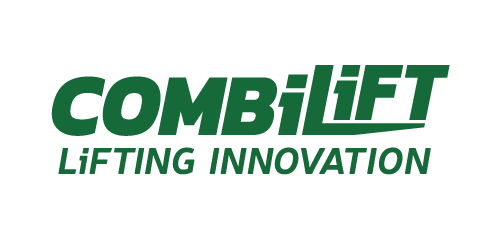The key to reducing a warehouse’s environmental footprint is to make the most of its square footage and switch to electric vehicles. Combilift is here to help.
With businesses and governments eyeing ambitious net-zero objectives, attention has understandably turned to reducing the environmental footprint of Australian warehouses. At the same time, Australia is facing historically low I&L vacancy rates – so there is the twofold pressure of better utilising less warehouse space while also reducing emissions per square foot.
Warehouses are by their nature energy-intensive operations – with all manner of machinery, lighting, and temperature-control systems constantly churning to keep goods coming and going. Additionally, the transportation and handling of goods within these spaces often rely on fossil fuel-powered vehicles, contributing to greenhouse gas emissions.
Chris Littlewood, Country Manager Australia for Combilift, notes that warehouses face unique challenges in reducing their carbon footprint due to their operational demands. “The high density and turnover of goods in Australian warehouses necessitate robust solutions that can operate efficiently within limited spaces while minimising environmental impact,” he says.
Making the most of warehouse space
Combilift vehicles not only enhance storage efficiency but also contribute significantly to reducing the carbon footprint of warehouses. By optimising space utilisation, Combilift equipment can help decrease the physical and energy footprint of storage facilities.
For example, Combilift has helped many clients achieve gains in storage density – by as much as 50 per cent in some cases – by introducing its Aisle Master Very Narrow Aisles Articulated Forklift, opening up previously underutilised vertical space.
“If you reduce your warehouse footprint while raising your storage density – by using more vertical space, for instance – you are saving on the costs of operating a bigger warehouse, and using less energy,” Littlewood says. “We pride ourselves on delivering solutions that can operate in narrow aisles and move with flexibility. If you then electrify those vehicles then you’re making serious inroads towards your sustainability objectives.”
Going electric
One of the most impactful changes warehouses can make is switching to electric vehicles and equipment. Combilift’s range of electric products offers numerous benefits over traditional diesel or LPG-powered machines, including lower emissions, reduced noise pollution, and decreased operational costs.
“We’re focussed on making vehicles that are more environmentally friendly to use, as well as vehicles that enable our customers to make their warehouse utilisation more environmentally friendly,” says Martin McVicar, Founder and CEO of Combilift. “In the last five years, roughly 90 percent of our R&D investment has gone into electric power equipment. So, the majority of the vehicles we’re bringing to market are electric.”
Among the space-saving electric vehicles Combilift offers is the Combi-CB70E, which boasts the distinction of being the shortest 7-tonne capacity counterbalance truck on the market. Its multidirectional capability allows for versatile and space-saving handling of bulky loads – crucial for industries such as timber – saving on space and energy.
The Electric Aisle Master Articulated Forklift series boosts storage efficiency by operating in aisles as narrow as 1.6 metres. This series benefits from AC technology, which not only improves performance and productivity but also lowers maintenance requirements, reducing downtime and operational costs.
For smaller spaces, the Combi-CS Pedestrian Stacker offers a safe and economical solution with its user-friendly features and versatile indoor-outdoor operation, improving space utilisation while cutting emissions.
For larger operations, the Combi-AGT Autonomous Guided Forklift Truck is an innovative solution for automated handling of oversized loads. The electric battery powered Combi-AGT’s autonomous capabilities reduce the need for manual labour and enhance operational efficiency.
The transition to electric vehicles in warehouses is not just a trend but a necessary step towards a more sustainable future. “Australia’s heavy industries are increasingly regulated, with zero-harm goals becoming the standard,” says Littlewood. “Our customers are pushing for sustainable solutions, and Combilift is responding with innovative, environmentally friendly products.”
But it’s not just the products themselves that Combilift can help with, says Littlewood: “We’ve long offered a warehouse design service to customers free of charge – showing them exactly how they can unlock every inch of storage space within their warehouse layout.”
As new environmental regulations and reporting requirements come online, companies will be assessed on the sustainability of their whole supply chains – in addition to the direct emissions their operations produce, organisations will be marked on the emissions put out by those suppliers from whom they buy equipment. In other words, it won’t be enough to use an environmentally-friendly forklift if that forklift wasn’t itself manufactured sustainably.
Fortunately, Combilift has long been committed to embedding eco-friendly practices into its manufacturing processes. Its facility in Ireland is a testament to this commitment, featuring biomass-fuelled paint lines, extensive solar panels, rainwater harvesting systems, and skylights that reduce electricity usage.
As Littlewood puts it: “Sustainability is not just a corporate social responsibility for us; it is fundamental to our value proposition as a business.”





